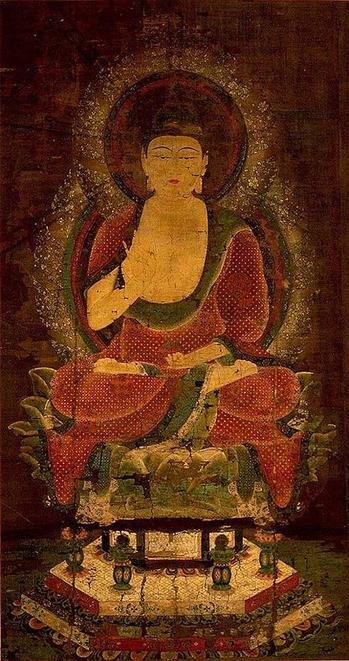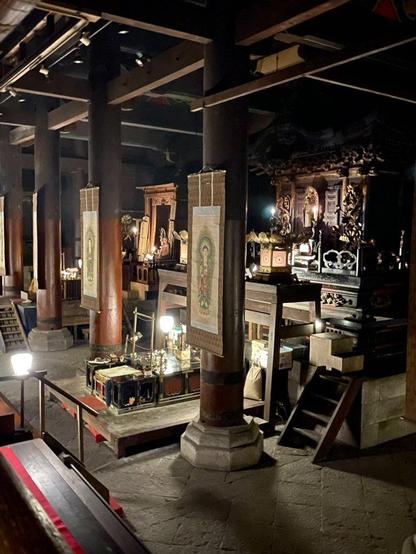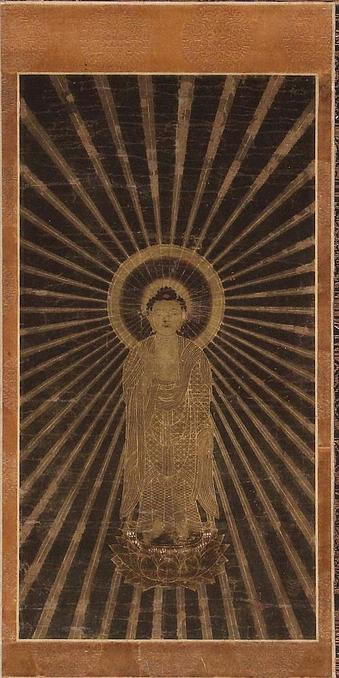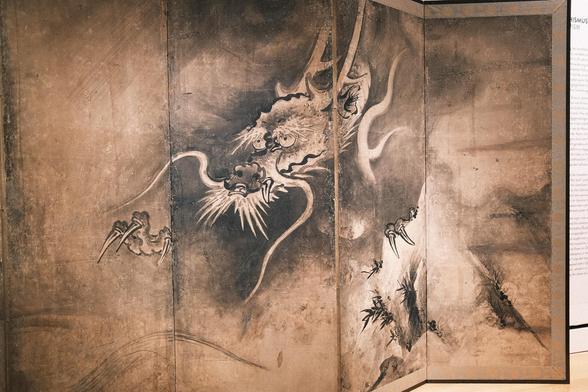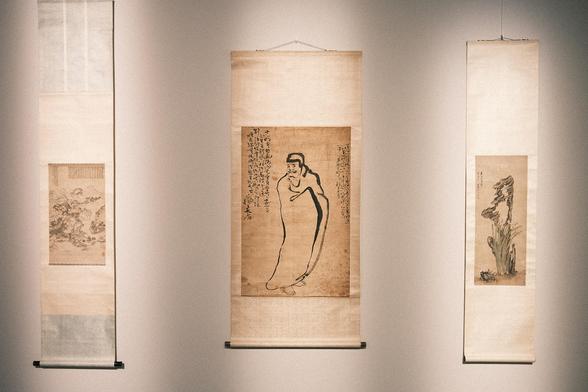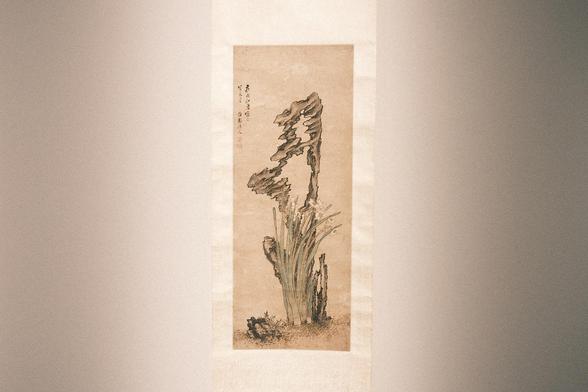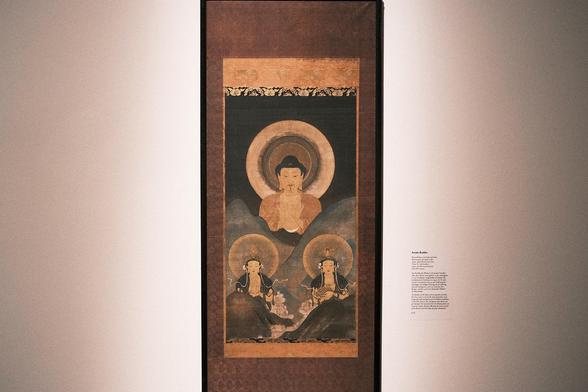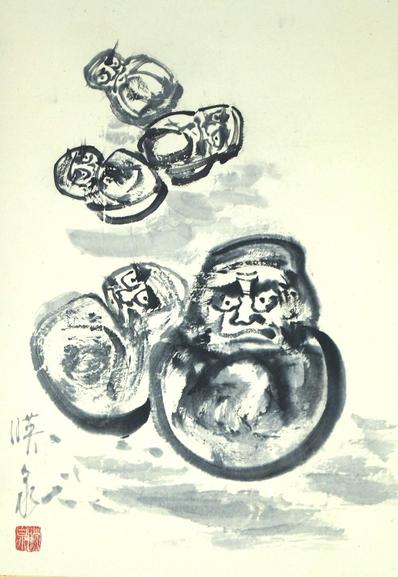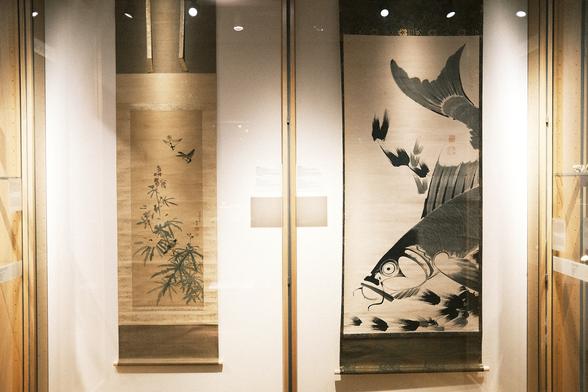Bird's eye - I'm trying to develop a particular pixel art style, I feel I'm getting close here. 260 × 260 pixels, 8 tonos. #view for #pixel_dailies #crow #cuervo #animation #glitch #cityscape #kakemono #birdsView #pixelart #ドット絵 @pixel_dailies
#kakemono
#Shaka #Nyorai i.e. the historical #Buddha #Shakyamuni in the collection of Jingo-ji up on Mount Takao in far northwest #Kyoto, #Japan. Hanging scroll (#kakemono), gold & color on silk dating to the 12th century.
#BuddhistArt #Buddhism
New Year's Konponchudo Naijin. The #hangingscroll (#kakemono) of Shichibutsu Yakushi was enshrined.
#BuddhistArt #Buddhism
#Japanese #Kakemono of #Amida #Nyorai, Raigo, Japan 13th-14th century; late #Kamakura period (1249 -1382) or early #Muromachi period.
#BuddhistArt #Buddhism
The tradition of #kakemono and #emakimono is closely related to other forms of #JapaneseArt 🎌, such as #byōbu. Byōbu are folding screens 🖼️ that feature painted scenes, often with narrative elements. This art form create a rich visual narrative expression in Japanese culture, reflecting the interconnectedness of art, literature, and daily life. Here are a few shots of examples of byōbu that I was able to collect during my recent visits to museums:
🌍 https://www.fabriziomusacchio.com/weekend_stories/told/2024-08-02-byobu/
#Kakemono (jap. 掛け物, lit. "#HangingScroll") are a prominent feature in traditional #JapaneseArt. Designed to be displayed vertically in alcoves called #tokonoma (床の間), they are used, for instance, in settings like the #TeaCeremony. The art of kakemono centers around the aesthetics of simplicity and seasonal change, making it a dynamic element of Japanese decor. Here is a brief summary of its history and significance:
🌍 https://www.fabriziomusacchio.com/weekend_stories/told/2024-07-19-kakemono/
Detail of a hanging scroll (#kakemono), #Kamakura period (1185-1333) depicting #Buddha #Shakyamuni (#Shaka #Nyorai) surrounded by the 16 Divine Protectors of the Great Wisdom Sutra displayed during the Setsubun spring chanting of the sutra on February 3rd at the Great Lecture Hall of Tsubosakadera Temple (壺阪寺) in Takatori, Nara Prefecture, #Japan
#BuddhistArt #Buddhism
#Hibiscus by Maruyama Okyo (left, hanging scroll (#kakemono), color on silk, dated 1772, #Japan) and #Carp by Itō Jakuchu (right, kakemono, ink on paper, late 18th century, Japan). According to a Chinese legend, only the strongest carp that manage to overcome a waterfall turn into a #dragon. Seen at the Museum for #EastAsian Art in #Cologne.
Aizen myōō, hanging scroll (#kakemono), ink, colors, gold on silk, #Japan, late #Kamakura period, 13th- early 14th century. Seen at the Museum for #EastAsian Art in #Cologne.
#AizenMyōō #FudōMyōōō #Buddhism #JapaneseArt #JapaneseCulture #Dharmapala
#Zen Circle by Deiryu (Kanshū Sojun, 1895 -1954), (#ensō and the character "yume" ("dream"), #Japan, #Showa period, c. 1925 - 1954, #hangingscroll (#kakemono), ink on paper.
#Buddhism #BuddhistArt #ZenArt #JapaneseArt #HumboldtForum #Berlin
Blind people crossing an abyss, #Japan, Edo period, 18th c., #hangingscroll (#kakemono), ink on paper. Inscription: Inner life and the floating world are like the blind men's round log bridge - an enlightened mind is the best guide. (賛:養生も浮世も・座頭の丸木はし・わたり心が・よき手びさせ)
#JapaneseArt #Buddhism #BuddhistArt #Zen #HumboldtForum #Berlin
#Hotei pointing at the #moon by Awakawa Yasuichi (1902 - 1976), #Japan, Showa period, 20th c., #hangingscroll (#kakemono), ink on paper.
#Buddhism #BuddhistArt #Zen #JapaneseArt #HumboldtForum #Berlin
Munakata Shikō (棟方志功 羅漢羅怙羅尊者, 1903 - 1975) #Arhat Rahula (Rakan Ragora), #Japan, #Showa period, 1939, #woodblockprint mounted as a #hangingscroll (#kakemono). Being one of the great individualist woodblock artists in 20th century, Munakata Shiko’s themes are often taken from tradition and refer to #Buddhism, #Zen or folk tales. You can read more about his work in the image description.
#Ensō by Ikeda Harumasa (1750-1818), #Japanese hanging scroll (#kakemono), ink on paper, #Edo period, end of 18th - beginning of 19th century
#JapaneseArt #Buddhism #Zen #ZenBuddhism #IkedaHarumasa
The death of the historic #Buddha, #Japanese hanging scroll (#kakemono), ink on paper
#JapaneseArt #Buddhism
